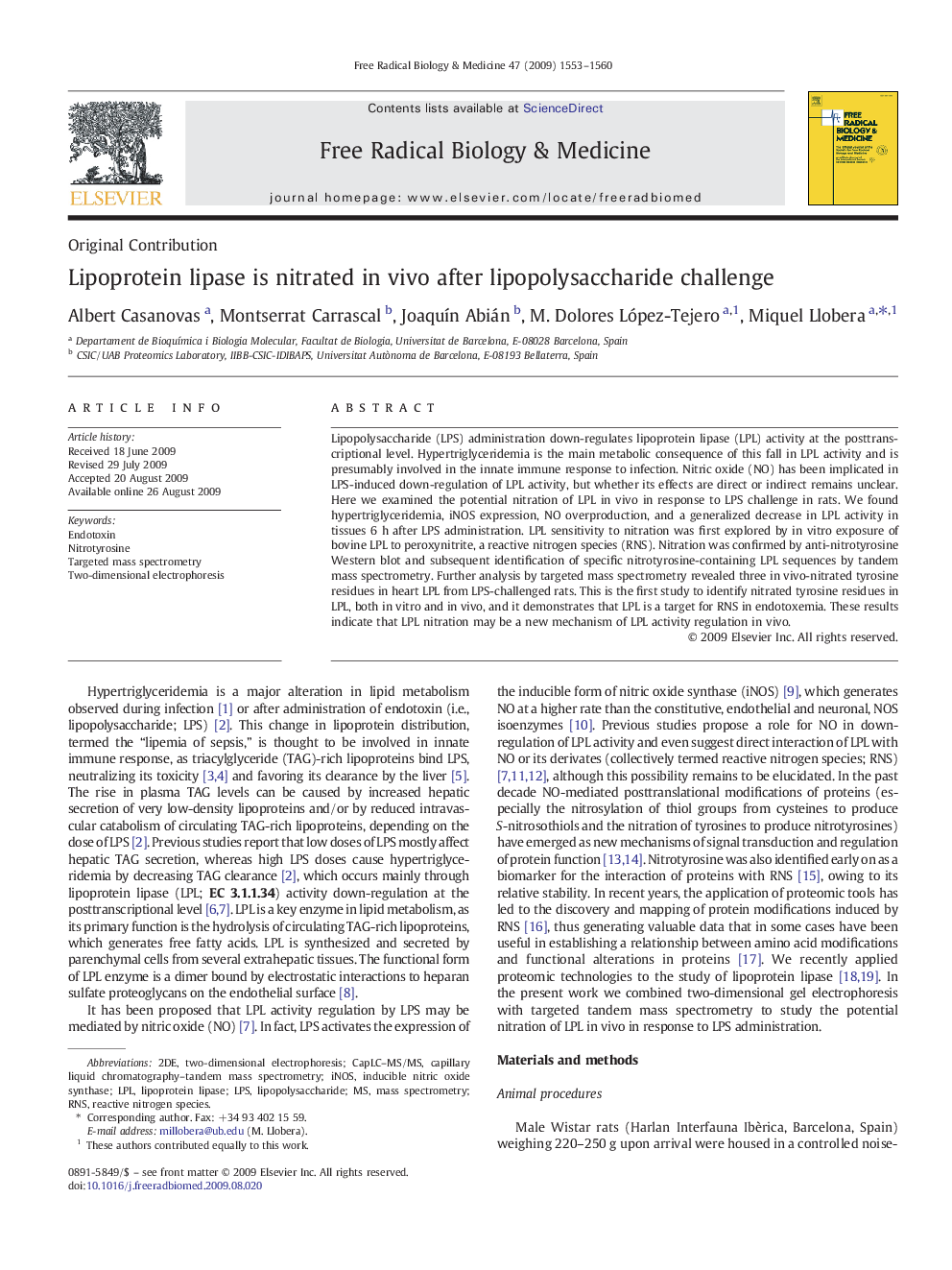| Article ID | Journal | Published Year | Pages | File Type |
|---|---|---|---|---|
| 1909638 | Free Radical Biology and Medicine | 2009 | 8 Pages |
Abstract
Lipopolysaccharide (LPS) administration down-regulates lipoprotein lipase (LPL) activity at the posttranscriptional level. Hypertriglyceridemia is the main metabolic consequence of this fall in LPL activity and is presumably involved in the innate immune response to infection. Nitric oxide (NO) has been implicated in LPS-induced down-regulation of LPL activity, but whether its effects are direct or indirect remains unclear. Here we examined the potential nitration of LPL in vivo in response to LPS challenge in rats. We found hypertriglyceridemia, iNOS expression, NO overproduction, and a generalized decrease in LPL activity in tissues 6Â h after LPS administration. LPL sensitivity to nitration was first explored by in vitro exposure of bovine LPL to peroxynitrite, a reactive nitrogen species (RNS). Nitration was confirmed by anti-nitrotyrosine Western blot and subsequent identification of specific nitrotyrosine-containing LPL sequences by tandem mass spectrometry. Further analysis by targeted mass spectrometry revealed three in vivo-nitrated tyrosine residues in heart LPL from LPS-challenged rats. This is the first study to identify nitrated tyrosine residues in LPL, both in vitro and in vivo, and it demonstrates that LPL is a target for RNS in endotoxemia. These results indicate that LPL nitration may be a new mechanism of LPL activity regulation in vivo.
Keywords
Related Topics
Life Sciences
Biochemistry, Genetics and Molecular Biology
Ageing
Authors
Albert Casanovas, Montserrat Carrascal, JoaquÃn Abián, M. Dolores López-Tejero, Miquel Llobera,
